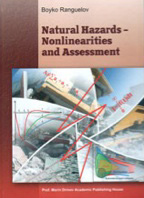Natural Hazards – Nonlinearities and Assessment

Published: 21 December 2011
Abstract Views: 805
PDF: 443
Publisher's note
All claims expressed in this article are solely those of the authors and do not necessarily represent those of their affiliated organizations, or those of the publisher, the editors and the reviewers. Any product that may be evaluated in this article or claim that may be made by its manufacturer is not guaranteed or endorsed by the publisher.
All claims expressed in this article are solely those of the authors and do not necessarily represent those of their affiliated organizations, or those of the publisher, the editors and the reviewers. Any product that may be evaluated in this article or claim that may be made by its manufacturer is not guaranteed or endorsed by the publisher.
Supporting Agencies
Papadopoulos, G. A. (2011). Natural Hazards – Nonlinearities and Assessment. Research in Geophysics, 1(1), e2. https://doi.org/10.4081/rg.2011.e2
PAGEPress has chosen to apply the Creative Commons Attribution NonCommercial 4.0 International License (CC BY-NC 4.0) to all manuscripts to be published.


 https://doi.org/10.4081/rg.2011.e2
https://doi.org/10.4081/rg.2011.e2



